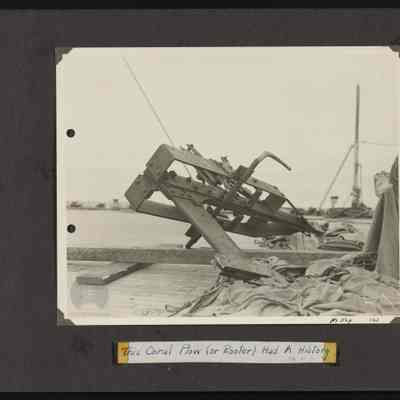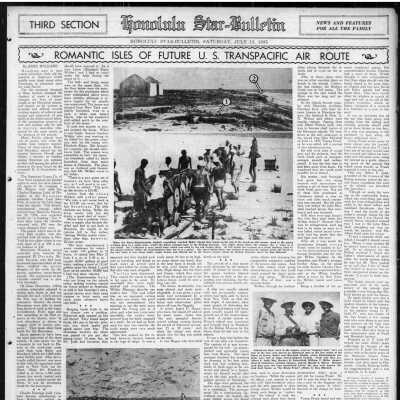
Colonists: Enter a name or part of a name to find someone
135
A collection across multiple repositories. A placeholder or face shot for each colonists with details of where they were stationed and the expeditions that they participated in as well as links to documents or articles that they appear in.

Repository: Bishop Museum Archives
96
Bernice P. Bishop Museum (Bishop Museum), whose extensive related holdings include photo albums, over a hundred photographs, moving images, documents, and, most significantly, logbooks within which the colonists detailed their observations and experiences. Wrote Kamehameha Schools alumni Abraham Pi‘ianaia, who was one of the first Hawaiian colonists: “All we could do was watch with longing eyes, paying tribute to the ship that had been our home for the past 5 days. We watched in silence for several moments, then we all looked at each other with a mixture of sadness and happiness in our eyes. Sad to see our only contact with the world, our homes and friends, getting father away, yet happy to be left by ourselves on this little atoll that we hope will be of great importance someday.” [Baker Island Logbook, June 18, 1936.]

Repository: Center for Oral History
9
Center of Oral Historyʻs first person primary source accounts from eight Hawaiʻian men recruited by the United States government starting in 1935 for a unique expedition in the South Seas. These were voice recorded and transcribed in 2006, sixty years later. Presented online in the Hui Panalāʻau Searchable Database with permission from the University of Hawaiʻi Center for Oral History, and Bernice Pauahi Bishop Museum.

Repository: Hawaiʻi State Archives
41
Within State of Hawai‘i’s archives are nearly 70 photographs and other documents that detail the assistance provided by the Territory of Hawaiʻi. Photographs show that in 1937, territorial architect Harry Kaʻonohi Stewart was sent to the islands to help build new quarters for the colonists. Nearly twenty years later, incorporation documents note that a group called “Hui Panalaau” was formed whose purpose was “to preserve and perpetuate the association of those persons who took part in and contributed to the colonization of the Equatorial Islands … and to honor those who died while in the service of the United States of America as colonists of the Equatorial Islands of the Pacific.”

Repository: Kamehameha Schools
113
The archives include correspondence, school newspapers, student diaries, and documents that reveal how a private school for Hawaiian children was drawn into this colonization project. The first expedition saw six (6) KS graduates placed in pairs on each of the three (3) islands. Over the course of seven years, more than fifty (50) of the colonists were alumni or students of Kamehameha School.

Repository: University of Hawaiʻi Library Collection
85
University of Hawaiʻi at Manoa Library’s Collection which contains maps, manuscripts and published articles in local newspapers and magazines that track the seven year history of the project, including President Roosevelt’s claiming of the islands and Amelia Earhart ill-fated flight.












